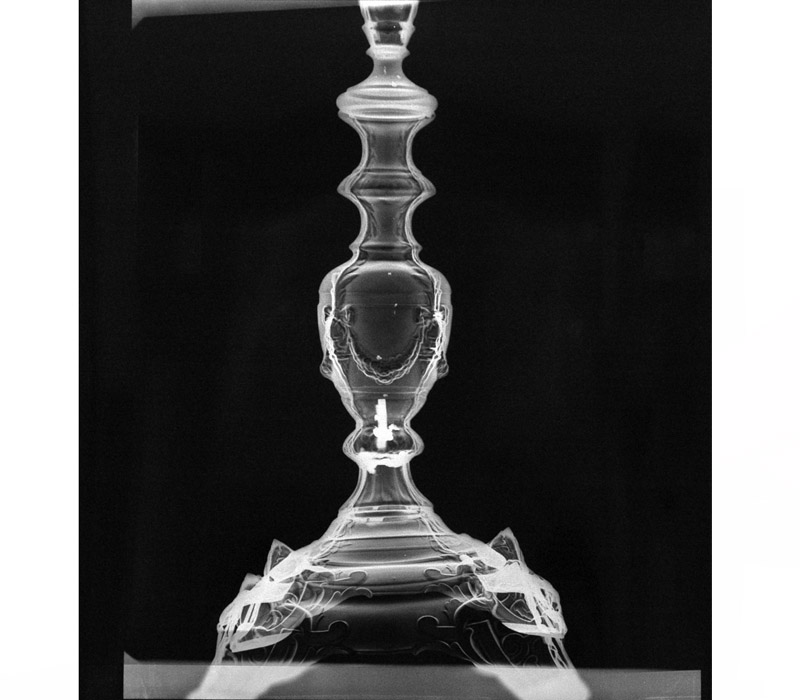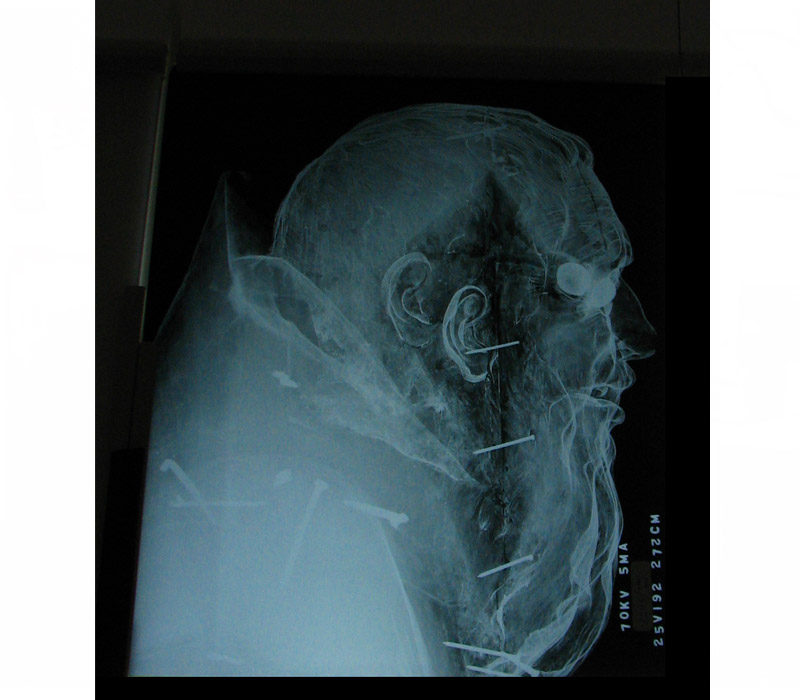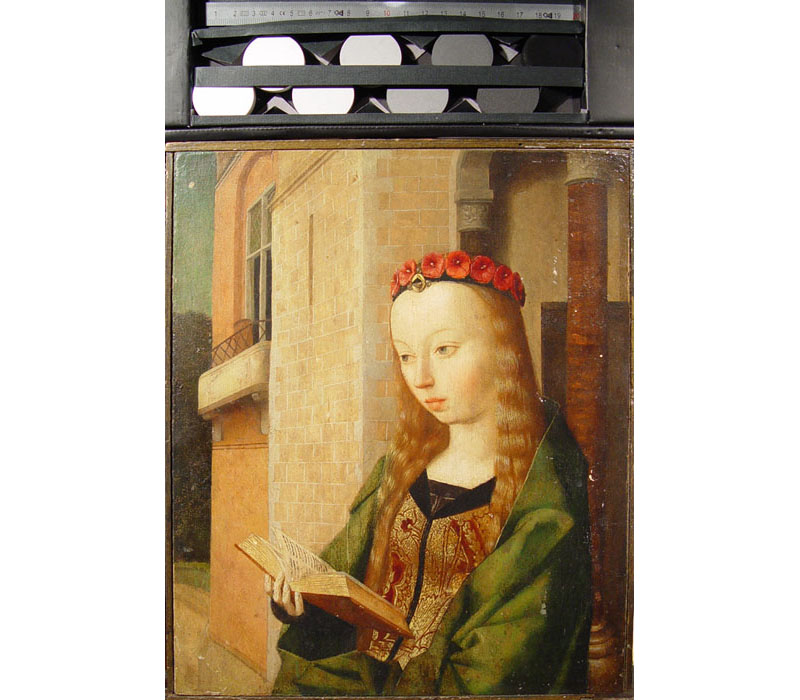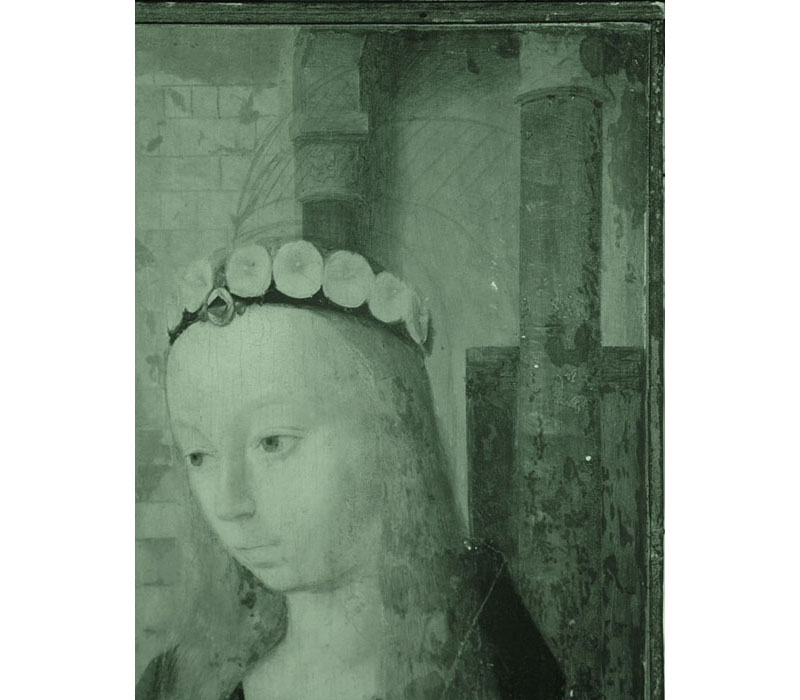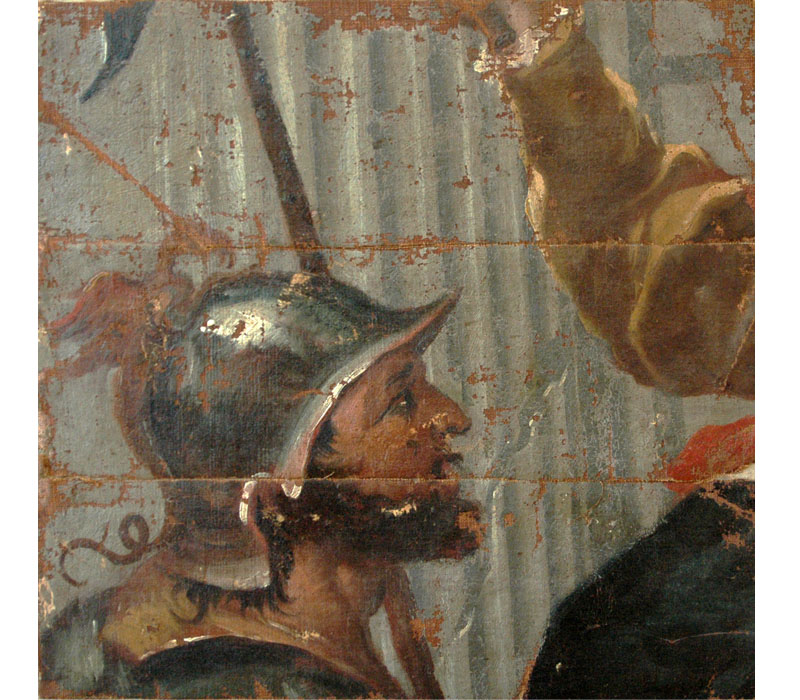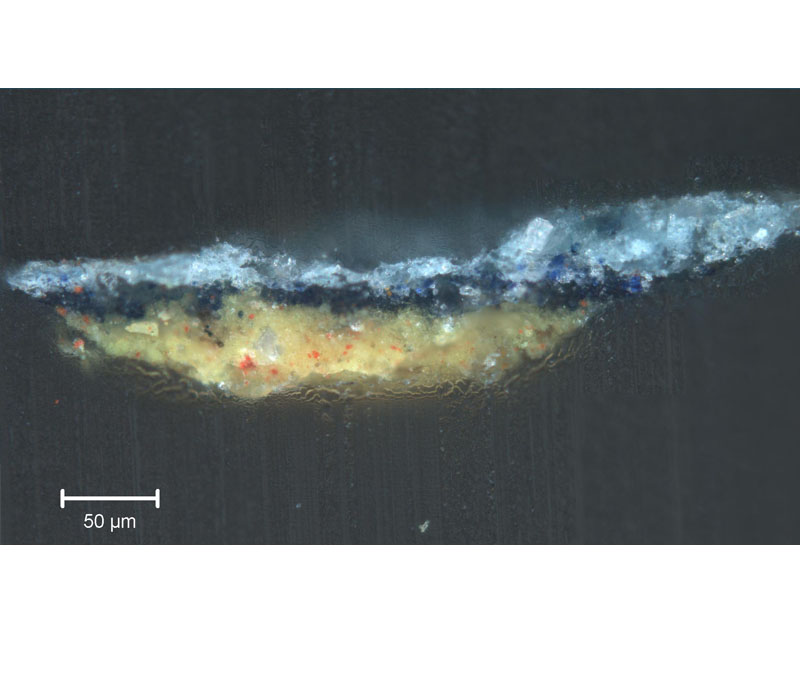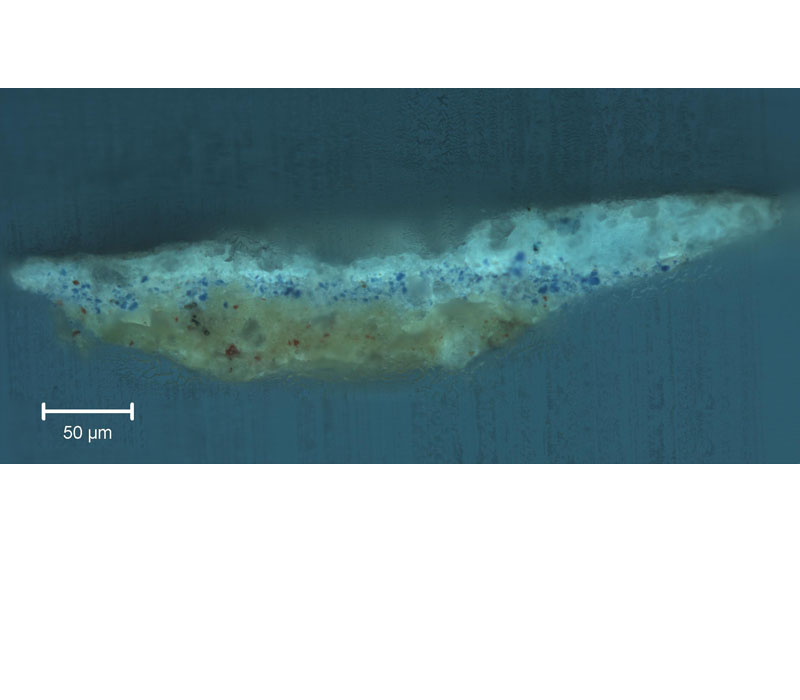Imaging techniques such as UV-Vis, IR, multi-spectral cameras or X-rays allow to look below the surface of the artwork in order to look at traces related to the manufacturing process or to some important milestones in the conservation history of the object.
They allow to look at high details in the signatures, inventory marks and other inscriptions. Imaging can also help to reveal modeling processes, cast and molding technologies. Finally, imaging may help identify the stages of creation of the painting: under-drawings, repentance, etc.
Beyond visible
Optical observation is the first examination to be made. It is the fundamental mean in expertise and the most obvious of visual examinations. Macroscopic examinations (using naked eye) are distinguished from microscopic examinations (using a microscope).
Depending on the angle of illumination (microscopically or macroscopically), direct or raking light, can give different types of information. E.g. emphasize the brushwork in order to make the texture more visible and emphasize the cracks network.
In addition to optical examinations, examinations by radiation imaging, only come into play when it is necessary to complement the optical observation or suspected presence of important information, invisible otherwise. The optical analysis does not always light on the authenticity or the material history of the work.
Briefly, three types of radiation are used (the spectral range can be more complex with the multispectral imaging):
- ultraviolet (UV)
- infrared (IR)
- X-rays (Xray)
Each of these radiation penetrates the work to an increasing depth and book and additional information. This scheme allows to visualize the penetration of each radiation. Ultraviolet (UV) stop the varnish and the surface layer; infrared (IR) to penetrate the ground layer, on which is the preparatory drawing, and the X-ray (X-ray), high-energy, penetrate more or less be studied as a function of the chemical elements form and its thickness.
These examinations as we will see, will allow to reveal hidden information in the paint layer (repented or existing paint), hidden fractures in old objects glued, internal structures sculptures, etc.
These techniques will also be of great help to the restaurant owner, for example, view the surfaces of metal roots under a thick layer of tampering or areas restored a table.
Finally, in the case of large or complex three-dimensional structures objects, we may use tomography (CT scan). This technique consists of X-ray work in 3 dimensions. With data processing software, it is then possible to reconstruct the object virtually.

